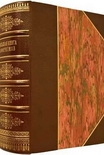Hitler's Terror Weapons Brooks, Geoffrey (bts books to read TXT) 📖

Book online «Hitler's Terror Weapons Brooks, Geoffrey (bts books to read TXT) 📖». Author Brooks, Geoffrey
“We need to understand about reactor stability. Our foremost fear is that the entire fission process at criticality will occur explosively in a fraction of a second while the heavy water is still practically cold. Whether the reactor stabilizes or explodes rests solely on the behaviour of the energy bands. If the width of the energy bands is insufficient for stability, then it would seem that there is no other factor which can prevent the chain reaction cascade. This event would take place in a large reactor in -400 secs-1 and the neutron count would suddenly reach 1028, enough for instantaneous energization of the fuel.”
Because he was working on the stable Period of the Reactor being less than a second, Heisenberg contended that it was impossible to harness energy in any reactor producing heat, or too dangerous to find out, which amounted to the same thing. Until the end of the war Heisenberg and Diebner practised interesting sub-critical reactor geometry, but no attempt was made to get a reactor going. This explains the perplexity of Karl Wirtz, his experimentalist, who confirmed that “enough heavy water was available, in principle, to achieve a critical reactor” 99, and that if in 1944 Heisenberg’s group and Diebner’s group had combined their heavy water resources in a single experiment, there would have been sufficient to moderate a working pile. Rift there might have been, but if either had really wanted to go ahead with the definitive experiment, a word in the right quarters would surely have been sufficient.
If Goudsmit did not understand the mathematics of reactor stability, his ignorance of what was being said by Heisenberg in the report could have led him to draw an unwarranted conclusion. After the liberation of Strasbourg on 29 November 1944, while evaluating dossiers found in a filing store at the University, Professor Goudsmit said he found a scientific paper by an unnamed author which described a German “reactor bomb”. This report, if it ever existed, has not yet been declassified by the US authorities and all there is to go on is Goudsmit’s vague sketch of the so-called reactor-bomb (see Appendix), which is actually nothing more than a copy of Heisenberg’s B-III experiment. It seemed pretty obvious to Goudsmit that, if Heisenberg believed his nuclear reactor would blow up, then surely that would amount to a sort of reactor bomb. This would be, in fact, the German atom bomb!
He is supposed to have informed Groves at once that the Germans had not been working on the fast fission uranium bomb and were thinking they could drop a nuclear reactor instead. Unlikely as it may seem, Groves accepted all this and included it in his own book. 100 The whole thing is set out in black and white, but of course makes no sense if Heisenberg knew the principle of the fast fission atom bomb, which he obviously did. That was why Groves lied about that aspect of Heisenberg’s knowledge. Groves knew they would both be dead by the time the transcripts were declassified. But what was the point of the subterfuge?
The answer must be that American Intelligence knew Heisenberg had designed, or at least had a hand in planning, a viable rudimentary German atomic bomb, and it was not convenient politically, then or now, to admit that embarrassing fact. This meant that atomic history had to be re-designed in some manner. Justifiably it leads us to theorize that the Heisenberg bomb actually did look like experiment B-III, and by labelling it the “reactor bomb” for the contingency that someone might blab, Groves and Goudsmit conjured up a falsified theory to explain it away.
The German Atom Bomb
The probable amount of plutonium-enriched uranium powder used in the bomb would have been in the region of 750 kilos. The sphere, resembling Heisenberg’s B-III sub-critical reactor, had a diameter of no more than a couple of feet. Paraffin and uranium would have been arranged in alternate layers no wider than an inch each. Paraffin is an excellent absorber of radiation, but its primary purpose here was to stop the Pu240 emissions causing premature fission. It is on account of Pu240 being so radioactive that there is a risk of predetonation. This is the reason why an implosion fuse working at the speed of light is required in order to set off a plutonium bomb. Did Germany have such a fuse? According to the CIOS-BIOS/FIAT 20 report, in May 1945 Germany had every kind of fuse known to the United States in October 1946 – radio, radar, wire, continuous wave, acoustic, infra-red, light beams and magnetics “to name just some”. Nuclear physicist Pat Flannen commented:
“The plutonium-enriched uranium would have to be kept atomically isolated until the moment of detonation. Shielding, capable of stopping the Pu240 from undergoing premature fission, would have to be provided, that would have to remove itself at the moment of nuclear assembly so quickly that the Pu240 would have no time to react before the Pu239 did. For this bomb to work, three things would be required:
A. – An excellent radiation-absorbing substance such as paraffin to block the emissions of the Pu240 but which would nevertheless disperse quickly on umpact, being a liquid.
B. – The closest proximity of





Comments (0)